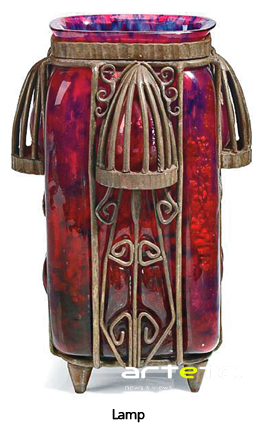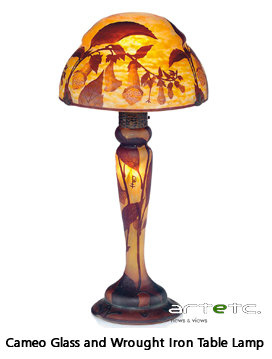- Publisher's Note
- Editorial
- The Enigma That was Souza
- Progressive Art Group Show: The Moderns
- The Souza Magic
- M.F. Husain: Other Identities
- From All, One; And From One, All
- Tyeb Mehta
- Akbar Padamsee: The Shastra of Art
- Sensuous Preoccupations of V.S. Gaitonde
- Manishi Dey: The Elusive Bohemian
- Krishen Khanna: The Fauvist Progressive
- Ram Kumar: Artistic Intensity of an Ascetic
- The Unspoken Histories and Fragment: Bal Chhabda
- P. A. G. and the Role of the Critics
- Group 1890: An Antidote for the Progressives?
- The Subversive Modernist: K.K.Hebbar
- Challenging Conventional Perceptions of African Art
- 40 Striking Indian Sculptures at Peabody Essex Museum
- Tibetan Narrative Paintings at Rubin Museum
- Two New Galleries for the Art of Asia opens at the Museum of Fine Arts in Boston
- Raphael, Botticelli and Titian at the National Gallery of Australia
- The Economics of Patronization
- And Then There Was Zhang and Qi
- What Happened and What's Forthcoming
- Random Strokes
- Yinka Shonibare: Lavishly Clothing the Somber History
- A Majestic “Africa”: El Anatsui's Wall Hangings
- The Idea of Art, Participation and Change in Pistoletto’s Work
- On Wings of Sculpted Fantasies
- The Odysseus Journey into Time in the Form of Art
- On Confirming the Aesthetic of Spectacle: Vidya Kamat at the Guild Mumbai
- Dhiraj Choudhury: Artist in Platinum Mode
- Emerging from the Womb of Consciousness
- Gary Hume - The Indifferent Owl at the White Cube, London
- Daum Nancy: A Brief History
- Experimenting with New Spatial Concepts – The Serpentine Gallery Pavilion Project
- A Rare Joie De Vivre!
- Art Events Kolkata-December 2011– January 2012
- Art Bengaluru
- Mumbai Art Sighting
- Delhi Dias
- Musings from Chennai
- Preview, February, 2012- March, 2012
- In the News-January 2012
ART news & views
Daum Nancy: A Brief History
Issue No: 25 Month: 2 Year: 2012
Collectible
by Anurima Sen
Daum Nancy rose to prominence during the Art Nouveau and Art Deco period, and captured the imagination of collectors all over the world. Let us take a quick look at the interesting events that shaped the company.
 The German-French War of 1870-71 had just ended, and there occurred a shift in both the countries’ territories. The borders changed, and the Daum family found themselves in German territory. Soon after they moved to Nancy which had by then become a thriving business centre where many rich people had relocated post the war.
The German-French War of 1870-71 had just ended, and there occurred a shift in both the countries’ territories. The borders changed, and the Daum family found themselves in German territory. Soon after they moved to Nancy which had by then become a thriving business centre where many rich people had relocated post the war.
Jean Daum was a notary from Bitche who had lent some money to the proprietors of a glass factory in Nancy, the capital town of the French region of Lorraine. The glassworks was then named ‘Verrerie Sainte Catherine’. In 1878, Daum took over the factory when its erstwhile owners were unable to pay off their debt and renamed it ‘Verrerie de Nancy’. In this time of grave financial crisis, Daum decided to involve all his family members in the business in order to make money. This decision led to some very strict measures: his sons were married off to the daughters of rich businessmen and their dowries went straight to the glass factory. He disallowed his daughters, Jeanne, Louise and Fanny, from marrying because he did not want to spend any money on their dowry. The factory initially produced glassware such as drinking glasses and pitchers and then ventured into artistic glass manufacturing in 1891.
After Daum’s death in 1885, his son Auguste Daum took over the control of the company in the year 1890. The Daum brothers exhibited their ‘Handsome Tavern Glass’ at the Paris International Exhibition in 1889. This event was of utmost significance because it marked the birth of the French Art Nouveau movement. The success of Emile Galle had egged them on in this field. It should be considered that the Daums were a family with shrewd business acumen but they were not artists; hence they hired the best artists of the age to work for them. Names like Henri Berge, Almaric Walter, Charles Schneider and Jacques Gruber worked for Daum, with the only catch being that they were not allowed to sign their own names. Instead, the vases were signed Daum Nancy and bore the Lorraine cross.
 Daum received his first ‘Grand Prix’ in 1900 because by then his factory had established its name as a producer of high quality glass. By 1903, Daum had started making vitrified vases. These vases are singularly responsible for the kind of fame the company acquired in the early 1900s. In 1906 Daum began the manufacture of pâte-de-verre, a glass-making technique first used over five thousand years ago in the early world. Pâte de verre fell out of use for several thousand years and was forgotten altogether. It was not until the late nineteenth century that this glass making technique was rediscovered and used by the sculptor Henri Cross for the benefit of Daum. Pâte de verre consists of a mixture of coloured glass, ground into a fine powder, and a fusing agent. The paste is then pressed into hollow moulds, mixed with several colours and fired. The resultant glass has a mottled appearance. The Daum brothers created these works of art at an outstanding rate, keeping up with public expectations.
Daum received his first ‘Grand Prix’ in 1900 because by then his factory had established its name as a producer of high quality glass. By 1903, Daum had started making vitrified vases. These vases are singularly responsible for the kind of fame the company acquired in the early 1900s. In 1906 Daum began the manufacture of pâte-de-verre, a glass-making technique first used over five thousand years ago in the early world. Pâte de verre fell out of use for several thousand years and was forgotten altogether. It was not until the late nineteenth century that this glass making technique was rediscovered and used by the sculptor Henri Cross for the benefit of Daum. Pâte de verre consists of a mixture of coloured glass, ground into a fine powder, and a fusing agent. The paste is then pressed into hollow moulds, mixed with several colours and fired. The resultant glass has a mottled appearance. The Daum brothers created these works of art at an outstanding rate, keeping up with public expectations.
 Thus, it seems today that they have been involved with the production of everything related to glass—from perfume bottles to animal figurines. One can find many kinds of similarities in Daum’s and Galle’s body of work and methods—however it must be said that this is despite the fact that both worked independently. They made in the same era and both used wheel engraving and acid-etching. But with the intercalair and enamel vases, Daum took his own place in the Art Nouveau period. His vases came in quirky shapes, stunning colours and were decorated with motifs such as flowers and landscapes. More than three hundred and fifty designers worked on their creations. Daum collaborated soon after with Louis Majorelle who made stunning bronze mounts for the Daum lamps. As Art Nouveau turned into Art Deco, the pair produced some magnificent polished, brightly coloured glass known as ‘Jades’. Other well known designers who worked for Daum are Eugene Galles, Emile Wirts and also, Salvador Dali!
Thus, it seems today that they have been involved with the production of everything related to glass—from perfume bottles to animal figurines. One can find many kinds of similarities in Daum’s and Galle’s body of work and methods—however it must be said that this is despite the fact that both worked independently. They made in the same era and both used wheel engraving and acid-etching. But with the intercalair and enamel vases, Daum took his own place in the Art Nouveau period. His vases came in quirky shapes, stunning colours and were decorated with motifs such as flowers and landscapes. More than three hundred and fifty designers worked on their creations. Daum collaborated soon after with Louis Majorelle who made stunning bronze mounts for the Daum lamps. As Art Nouveau turned into Art Deco, the pair produced some magnificent polished, brightly coloured glass known as ‘Jades’. Other well known designers who worked for Daum are Eugene Galles, Emile Wirts and also, Salvador Dali!
In order to understand the collector’s interest in Daum Nancy objects, one must realize that this company has shaped itself up to become a producer of glass art objects and not simple glassworks. It pioneered and revolutionized old techniques by working with colour powders, acids, enamel and fluorine hydrogen. From the early 1900s emphasis was placed upon ornamental motifs in naturalistic forms. When Galle died in 1904, the Daum brothers became the leaders in the field of decorative glass and their dominance lasted for one productive, golden decade.
In 1914, the factory was shut down and converted into a hospital, and was reopened in 1918 under the leadership of Antonin Daum. It was halted for a second time with the advent of the World War II. The company switched from producing decorative glass to medical glass during those years.
 Let us take a look at how popular these collectibles have become over the recent years: At Christie’s, a Daum and Louis Majorelle overlaid, etched and applied glass bronze table lamp (circa 1900) was sold for $192,000 in the auction titled ‘Important 20th Century Decorative Art and Design’. In this same auction, a wrought iron and glass floor lamp by Edgar Brandt and Daum (circa 1925) commanded a price of $101,575. At another auction (The Pinhas Collection: Part II) a Marqueterie-Sur-Verre Glass Vase, circa 1900, was auctioned for $108,000. In 2000, another Edgar Brandt and Daum piece titled ‘La Tentation’ (a bronze and glass torchere) was sold for $99,500. At the same auction was sold an internally decorated applied glass vase (circa 1900) for a sum of $81, 600. In 2009, a mould blown cameo vase (1825), estimated at £25,000 - £35,000 was sold for £49,250. It was made of glass, was overlaid and acid-etched, with carved leaves. At the Pinhas Collection: Part 1, a wheel carved cameo glass floriform vase (circa 1900) was sold for $45,600.
Let us take a look at how popular these collectibles have become over the recent years: At Christie’s, a Daum and Louis Majorelle overlaid, etched and applied glass bronze table lamp (circa 1900) was sold for $192,000 in the auction titled ‘Important 20th Century Decorative Art and Design’. In this same auction, a wrought iron and glass floor lamp by Edgar Brandt and Daum (circa 1925) commanded a price of $101,575. At another auction (The Pinhas Collection: Part II) a Marqueterie-Sur-Verre Glass Vase, circa 1900, was auctioned for $108,000. In 2000, another Edgar Brandt and Daum piece titled ‘La Tentation’ (a bronze and glass torchere) was sold for $99,500. At the same auction was sold an internally decorated applied glass vase (circa 1900) for a sum of $81, 600. In 2009, a mould blown cameo vase (1825), estimated at £25,000 - £35,000 was sold for £49,250. It was made of glass, was overlaid and acid-etched, with carved leaves. At the Pinhas Collection: Part 1, a wheel carved cameo glass floriform vase (circa 1900) was sold for $45,600.
According to most collectors, the golden age of Daum Nancy was between 1845 and 1914. During this period of phenomenal development, they registered patents and experimented with construction and decoration techniques as a result of which collectors still clamour for a Daum Nancy belonging to the pre-World War I era